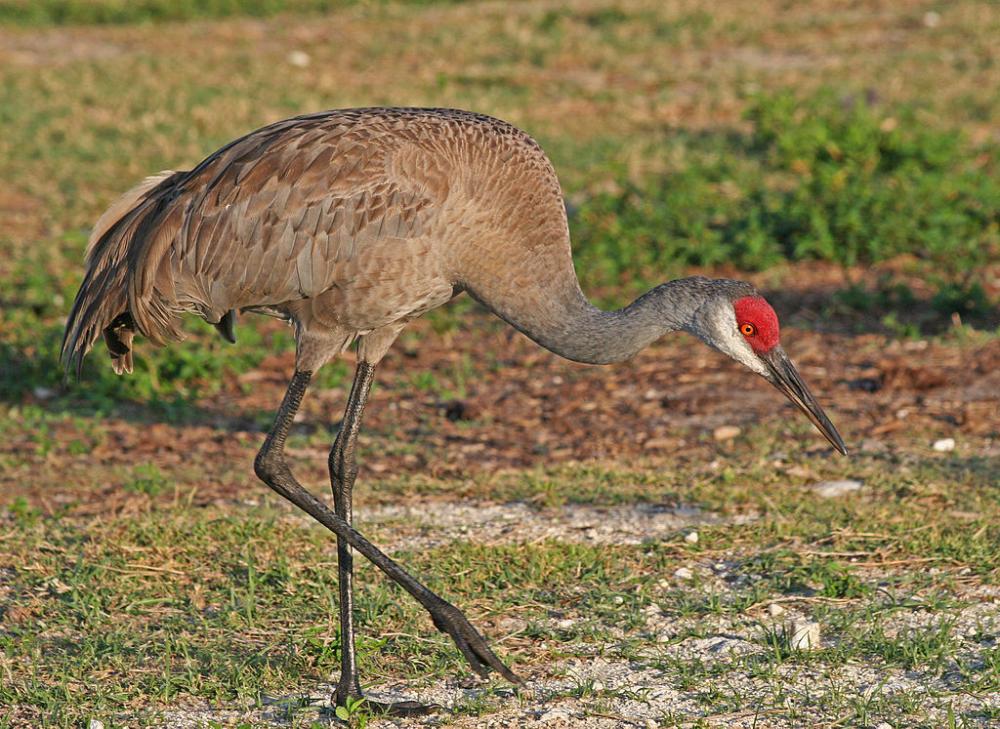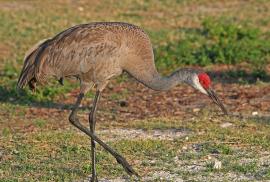Guide to Boreal Birds
Overview
These cranes migrate in great flocks and assemble in vast numbers at places like the Platte River in Nebraska. Here it is possible to see what must have been a common sight when the species bred over most of the interior United States. The mating dance of the Sandhill Crane is spectacular. Facing each other, members of a pair leap into the air with wings extended and feet thrown forward. Then they bow to each other and repeat the performance, uttering loud croaking calls. Courting birds also run about with their wings outstretched and toss tufts of grass in the air.
Description
34-48" (86-122 cm). W. 6' 8" (2 m). Very tall, with long neck and legs. Largely gray, with red forehead; immature browner, no red on head. Plumage often appears rusty because of iron stains from water of tundra ponds.
Voice
A loud rattling kar-r-r-r-o-o-o.
Nesting
2 buff eggs, spotted with brown, in a large mound of grass and aquatic plants in an undisturbed marsh.
Habitat
Large freshwater marshes, prairie ponds, and marshy tundra; also on prairies and grainfields during migration and in winter.
Range/Migration
Breeds from Siberia and Alaska east across Arctic Canada to Hudson Bay and south to western Ontario, with isolated populations in Rocky Mountains, northern prairies, and Great Lakes region, and in Mississippi, Georgia, and Florida. Winters in California's Central Valley, and across southern states from Arizona to Florida. Also in Cuba.



